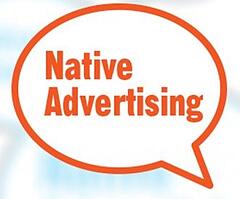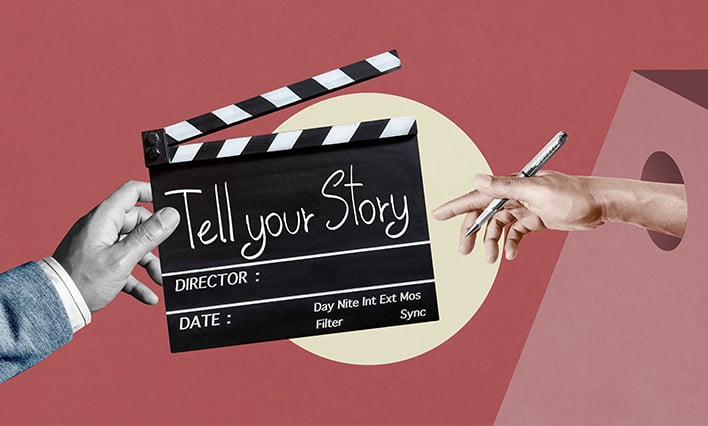Native Advertising: Truth in Deceit’s Clothing

 More than a half century ago, advertising guru David Ogilvy gave this sage advice:
More than a half century ago, advertising guru David Ogilvy gave this sage advice:
“It has been found that the less an advertisement looks like an advertisement and the more it looks like an editorial, the more readers stop, look, and read. Therefore, study the graphics used by editors and imitate them. Study the graphics used in advertisements, and avoid them.”
That piece of advice led to advertorial. When this amalgamation of advertising and editorial hit the trade press, editors disliked it, but they learned to live with it. After all, it was clearly labeled as a paid message, so readers could take it or leave it and the editor bore no responsibility.
But advertorial wasn’t finished evolving, and today we have something that sounds almost politically correct: Native Advertising. Speaking as a former editor, though, as much as I hate political correctness, I hate dishonesty even more. I’m not saying the message conveyed in native advertising is dishonest, but I am saying what Marshall McLuhan said around the same time Ogilvy said what he said: “The medium is the message.” That means the form of a medium embeds itself in the message, creating a symbiotic relationship by which the medium influences how the message is perceived. So, a piece of paid “native advertising” appearing in the New York Times and dressed in New York Times clothing will feed off the credibility the New York Times has garnered over the decades—no matter if its native message is linked to truth or falsehoods.
While the message of a native advertisement isn’t necessarily false, the medium of native advertising depends on deception.
A brochure put out by Media Miser, titled “Behind the Mask: A Guide to Native Advertising,” lays out this concept’s basic elements:
1. It fits the form and function of its platform; it is designed to mimic the editorial standards of the publication in which it appears.
2. If done well, it is content worthy of one’s time;
3. It preserves trust; though the notice is small, the fact that the article is a paid post is clear (but typically in smaller print). There is no trickery or deception.
Let me take those one by one.
First, the native ad is designed to “mimic” editorial standards. Here’s how mimic is defined: “to imitate (someone or their actions or words), typically in order to entertain or ridicule.”
If it does those things well, many will want to read it—whether it’s telling the truth or not. We all like mind candy, right? Think National Enquirer.
Oh, but native advertising isn’t trying to deceive. It’s right out front (in small type, of course, so fewer will notice it’s wearing a disguise).
As a magazine editor, I welcomed contributed editorial. That’s because my editorial staff was cut down to three: me, myself and I. The prospect of having access to a wide variety of reliable content sources whom I’d either come to trust or vetted to earn my trust, was a comfort. One of those sources was Goldstein Group Communications, whose staff has become an extension of many an editorial staff for the trustworthy content they produce. And that is an important part of a business publication editor today: to vet and partner with a wide variety of content sources. Ultimately, the readership depends on that editor as their link to the truth.
With native advertising, that control is taken out of the editor’s hands and is now the province of someone with an ad budget and a product to sell. Sure, they could have a great story to tell, but with nobody there to vet that content for the audience, the advertiser’s word becomes the new standard of truth for that magazine. If that word is broken, McLuhan’s law is reversed: The message is the medium—and that medium isn’t to be trusted anymore.
In Media Miser’s piece, Racepoint Global CEO Larry Weber is quoted: “The future of marketing is about transparency and honesty and truth.”
My contention is, the very act of dressing a message up in a medium’s clothing to make it more credible is the opposite of truth. Telling a little fib for someone’s greater good is dubbed a “white lie” in our culture. Didn’t Brian Williams get in a bit of trouble for doing that on the Nightly News? Well, NBC took care of that. They banished him to MSNBC, where the standard for veracity is tied more to opinions than to facts. Meanwhile, NBC is hoping Lester Holt can repair some of the damage Williams did to their medium. That should send an important message to Native Advertisers and those who love them.
Goldstein Group Communications wants your feedback. Does Native Advertising deal in truth or truthiness? Post a comment. But before you do, you might want to see what our president, Joel Goldstein, has to say about Native Advertising. Here’s a link to his insights.

Written by Tom Andel:
Goldstein Group agency account manager and content creator who writes with an editor’s mind, a writer’s soul and our clients’ best interests at heart.






